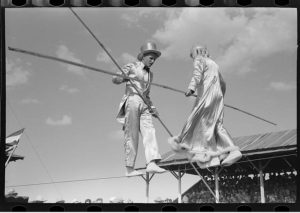(Above Picture: A Sample of Eugene Schwartz’s Work)
Eugene Schwartz, one of advertising’s greatest copywriters, only worked three hours a day for five days week.
Yet he called himself “the world’s hardest-working copywriter.”
How to Work for Three Hours a Day
Schwartz accomplished this feat by breaking up his day into small chunks. He’d set a timer for 33.33 minutes and force himself to write, read, and think without any coffee breaks, thumb-twiddling, or vacant staring. When his timer buzzed, he’d stop what he was doing, take a 10 minute break, and repeat the process until he finished his three-hour-day.
The routine paid dividends for Schwartz and he managed to write successful direct mail copy while authoring 10 books.
But Schwartz’s legacy has been hijacked by the people in his own field. If you Google Schwartz you get a slew of sites trying to sell his interviews, ideas, and writing strategies and they all employ the same sensationalist, ‘act-now’, language Schwartz helped pioneer. We don’t get to know Schwartz, we’re just told to spend $297 to learn how you to can become a “master copywriter.”
Still, it’s worth exploring Schwartz’s work ethic to see how we can learn from it. He was, after all, the best in his field.
Copywriting is a mix of writing, analysis, and design and Schwartz believed the only way to master all of these elements was to be prepared. He put it simply, “the person who is more prepared…makes the most money.”
Schwartz’s Work Strategy
Schwartz would get five weeks to write copy for a product. Here’s how he did it:
1. He’d take two weeks and get to know the product better than it’s creator. Schwartz routinely got manuscripts that were over 1,000 pages long explaining the product or service he was charged with selling. Schwartz would read through the manuscripts and underline any and all statements that made significant claims. He read every word and skipped the table of contents. He wanted to read every sentence without knowing what might come next. He said, “I’d get the guts, the heart, the meat, and the gist of [any] manuscript.”
2. He would type all of the important claims into one document and organize them for two weeks. Usually, this document would be around 60 pages. He’d take great care to separate what statements moved him the most.
3. Finally, Schwartz would begin writing copy–leaving the title and subtitles for last. He’d also begin his search for the right illustrations for the ad.
4. During the last few days Schwartz would edit and re-edit all of his copy to make sure it was perfect. He said, “I want to be more accurate and more knowledgeable than anyone I come up against.” Schwartz reasoned that if he took the extra time, he’d always do better than his younger, brighter, counterparts.
Conclusion
 When you glance at Schwartz’s old direct mail ads, you don’t think they took five weeks of labor. They look crammed, busy, and ripped out of a cheap comic-book. But on closer inspection, you can tell each word is there for a reason and there aren’t any extraneous phrases sticking around to fill space. It’s all good, lean, prose that informs.
When you glance at Schwartz’s old direct mail ads, you don’t think they took five weeks of labor. They look crammed, busy, and ripped out of a cheap comic-book. But on closer inspection, you can tell each word is there for a reason and there aren’t any extraneous phrases sticking around to fill space. It’s all good, lean, prose that informs.
It’s hard to see the beauty of Schwartz’s work when we have websites with vibrant colors, video, and pictures–but if you look close enough you can see it. Schwartz’s ads were proven to consistently get people to buy and it was because he worked hard to understand what he was talking about, instead of splashing together catch-phrases and intriguing pictures.
And he did this all without working “impossible hours.”




